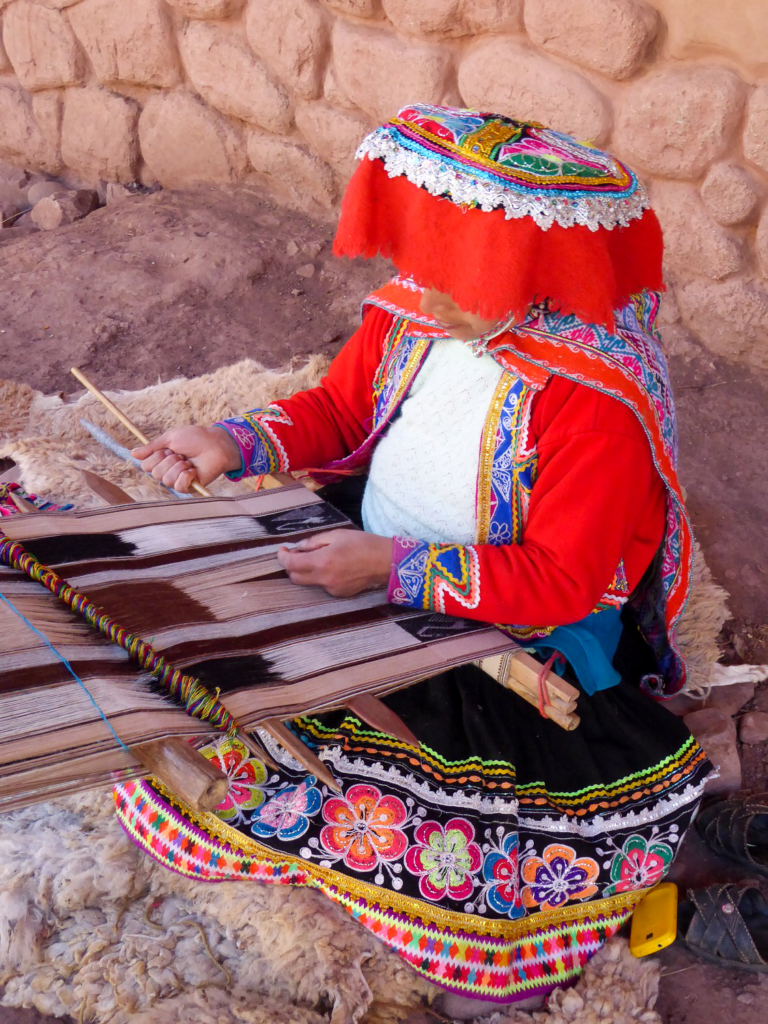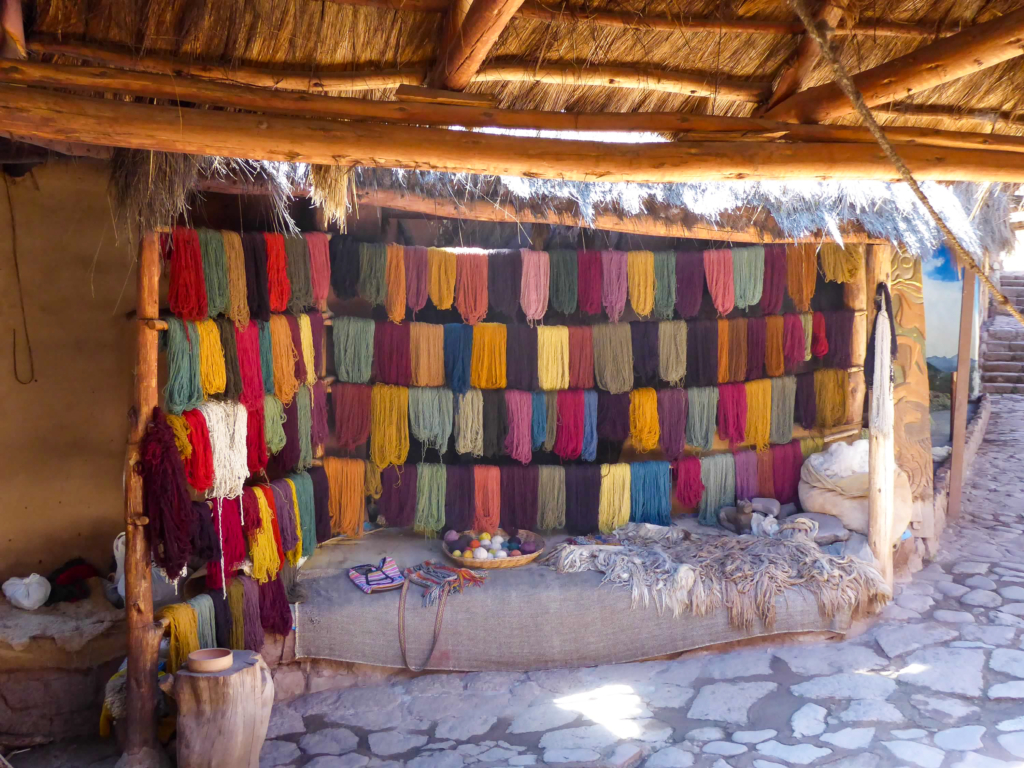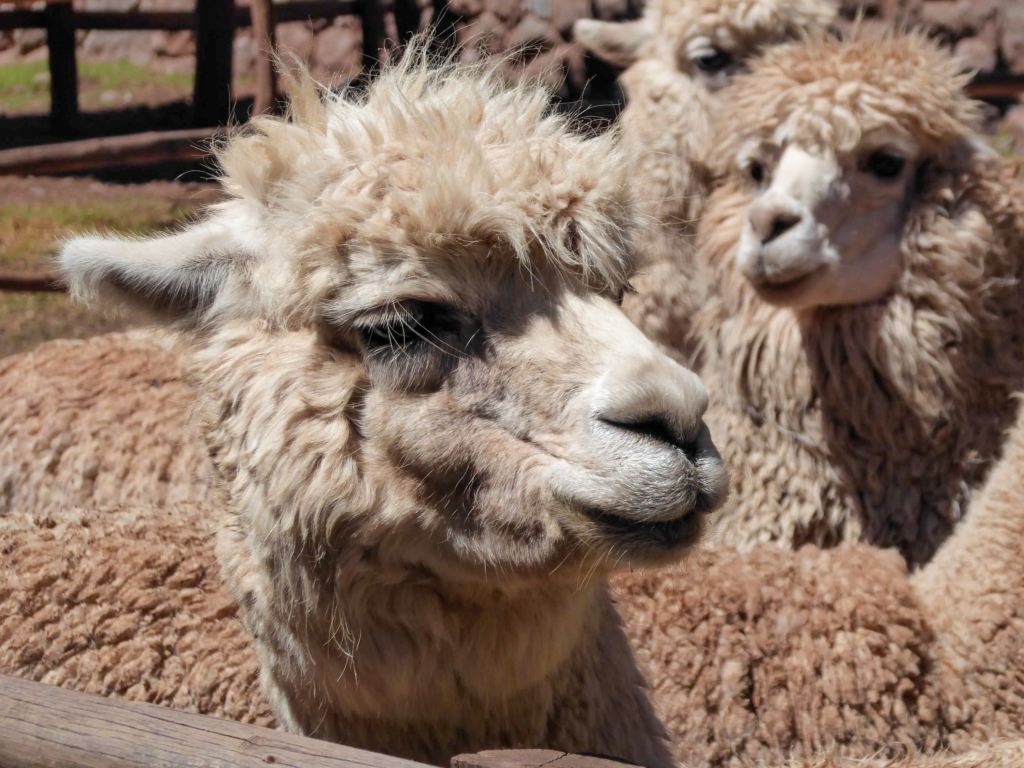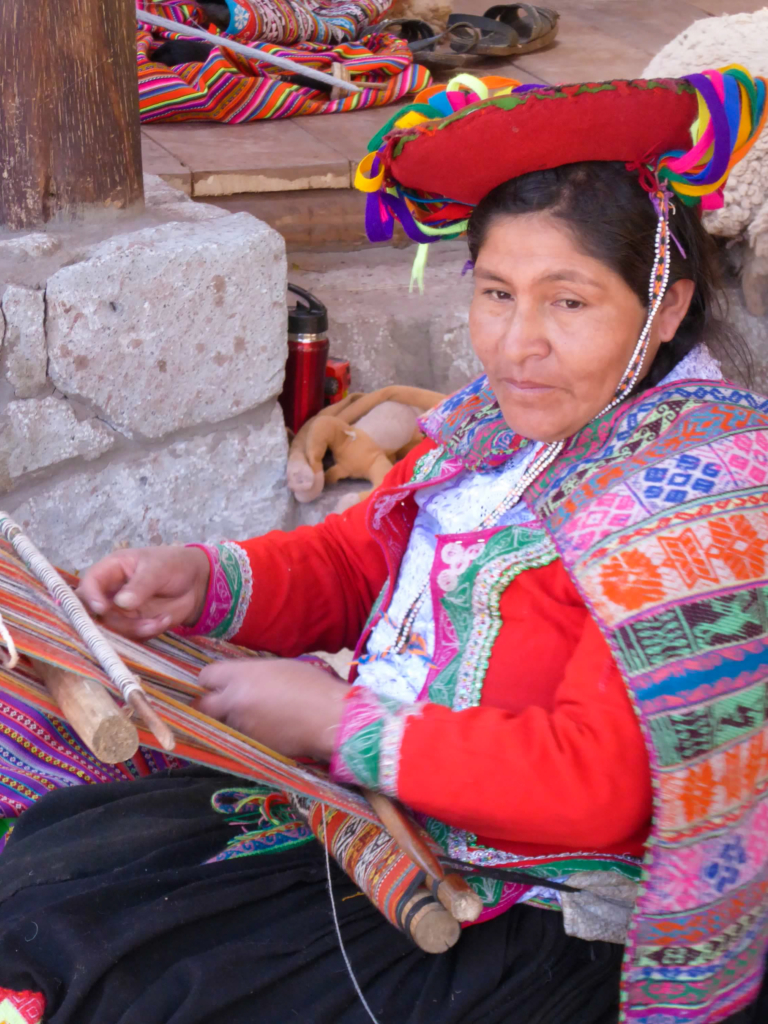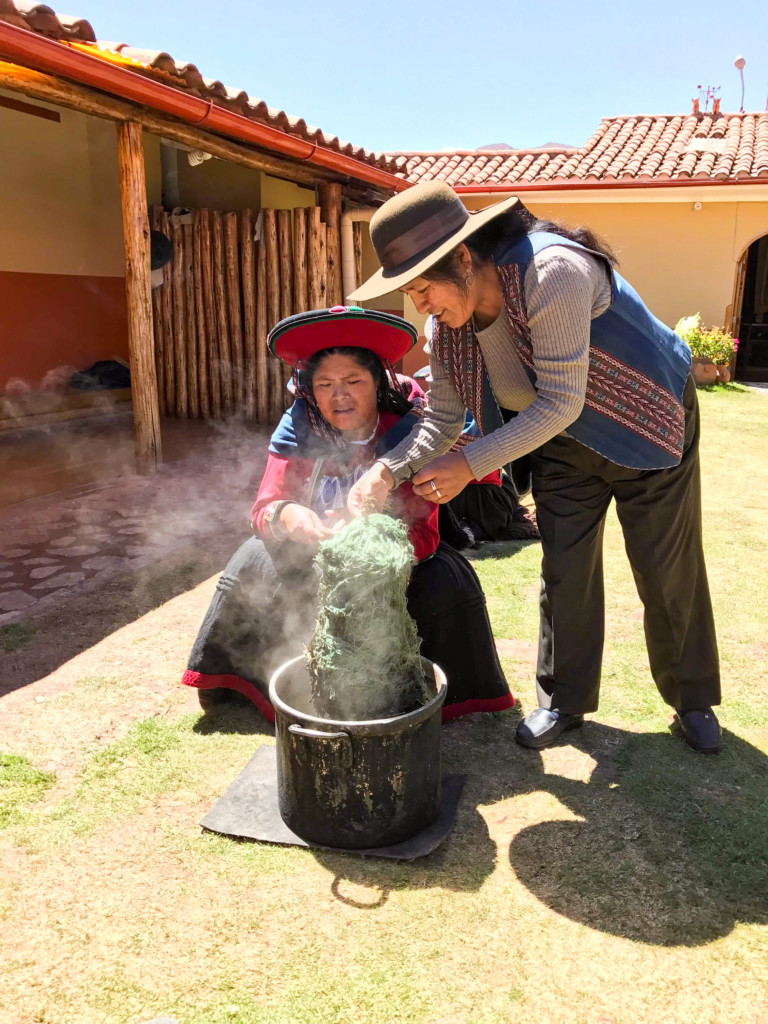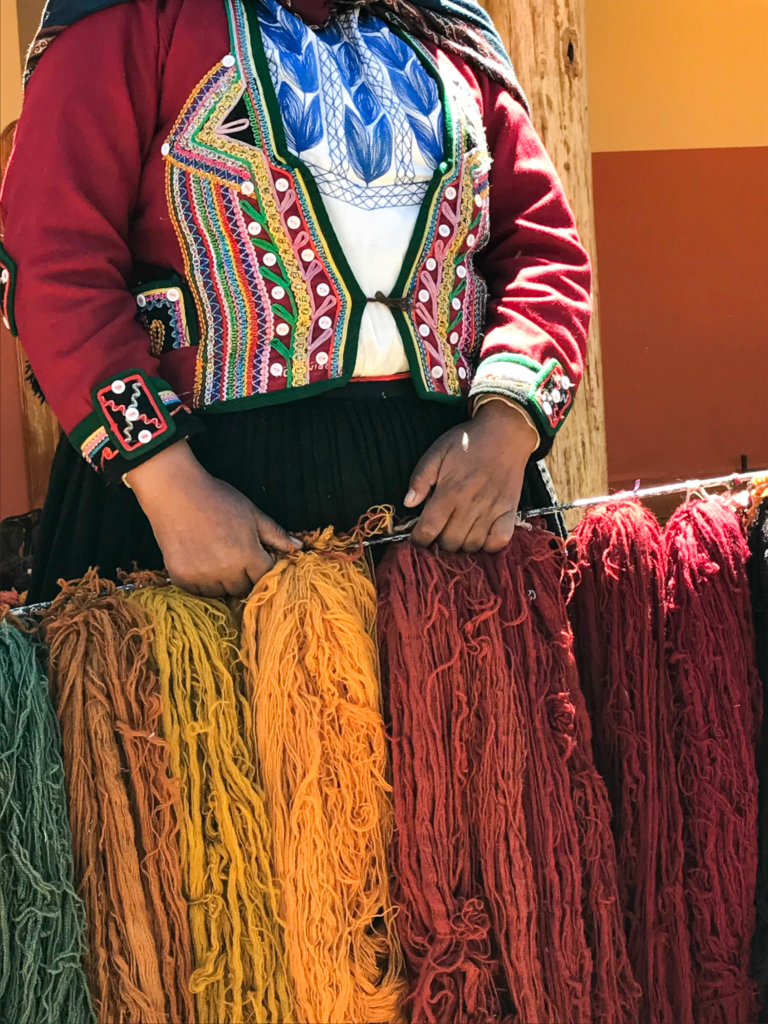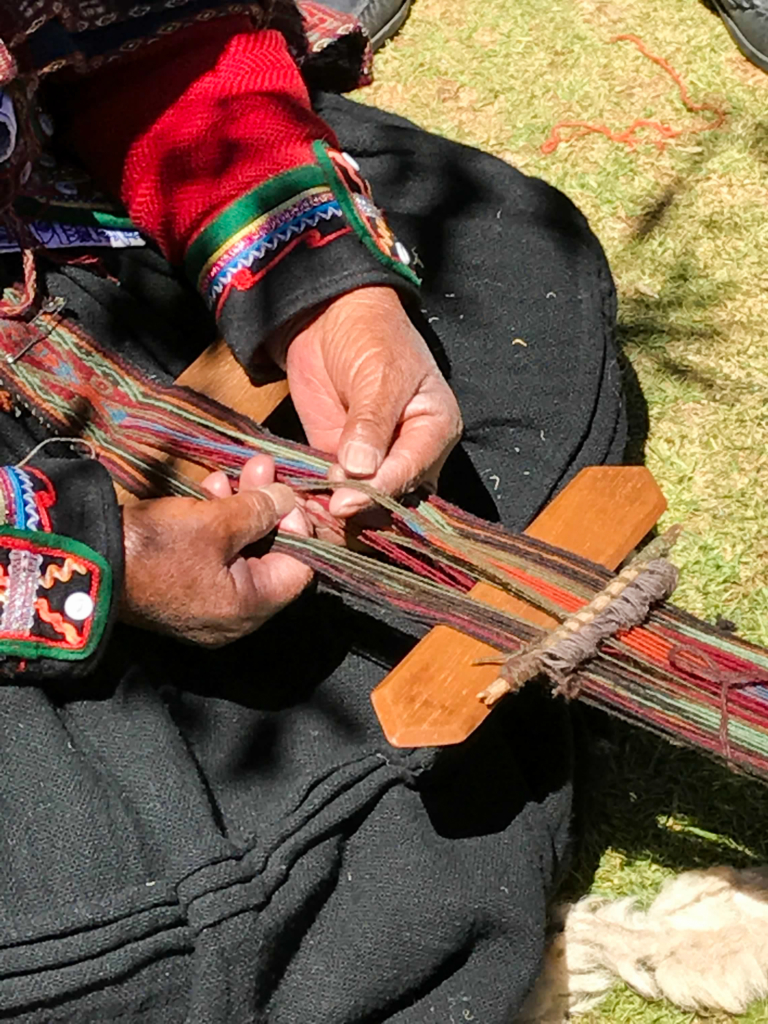The Andean textile tradition dates back to 3000BC. The weaving and embroidery traditions have long been a fundamental part of Peruvian culture for costumes and tapestries typically associated with wealth. Peruvian textiles, recently believed to be a generation away from extinction, are making a comeback. The knowledge of weaving is shared from weaver to weaver, often within a family and also by watching and practicing. Today, textiles are given as gifts in courtship, marriage, coming of age ceremonies, and are present during baptism and communion celebrations.
While women in the villages take care of children, tend to animals and sometimes work outside the home, they are almost constantly weaving, even as they go about these daily activities.
Wanting to support this cultural art form we built two weaving demonstrations into our itinerary. By experiencing the weaving demonstrations for ourselves we wanted to help to preserve this ancient craft and support the economic opportunities for the women and communities dedicated to weaving.
So it was that during our trek through the Sacred Valley we had an opportunity to visit Awanacancha, an Andean textile center whose key objective is to maintain the wealth of Incan textile art and keep the tradition alive. Awanacancha means “the palace of weaving” and as its name implies, it is all about textile production. During our visit we learned about the dyeing techniques and instruments used for centuries.
During our stay in Cusco, we made the journey to Chincheros, home of artist and master weaver Nilda Callañaupa. The revival of Peru’s weaving techniques is largely due to Nilda, who works with six mountain villages to resurrect symbolic patterns and avoid the use of garish chemical dyes and synthetic yarns. While in her home we met many of the women in Nilda’s cooperative and learned about wool spinning, natural dyes, traditional patterns, and weaving techniques.
Weaving is a process requiring the mastery of a number of skills. To weave, you must start with shearing the animals and washing the fibers. Once washed, the fibers are spun into a fine yard using an ancient tool, the drop-spindle consisting of a wooden stick with a weight on one end. Weavers clasp the stick in their hands and spin it, allowing it to hang freely as it spins. The energy from the spinning motion twists the fibers together to form the yarn. Nilda explained that the spinning was the most difficult and time-consuming part of the weaving process. She explained that many of the women in the cooperative began practicing their drop-spindle skills around age five to six.
Once the yard is spun, it is plied and it is soaked in a vat of dye. The natural dyes require that the locally available plants, minerals, and insects be gathered and prepared for use prior to adding them to boiling water. The weaver has to understand the quantities and combinations of the natural dyes to add in order to produce specific shades of colors.
If she hasn’t already done so, the weaver will decide what she will be making, including the design and color. This establishes the warping process to which she prepares the yarn for weaving. And then row by row, the weaver will select each warp yarn by hand, picking up specific yarns while letting others go. The weft yard will pass through the space created between the upper and lower warp yarns. Wooden or bone tools ensure a tight weave before the next row is started.
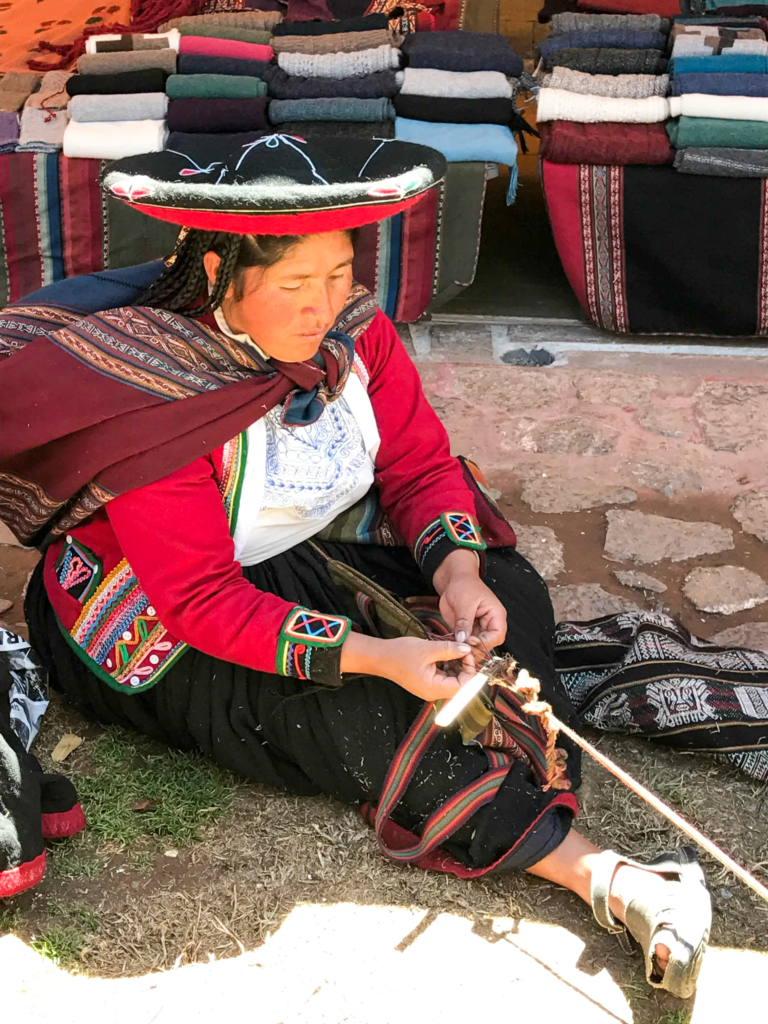
At every step in the process, the weaver has complete control of the material, design, color, and construction. Each Peruvian woven piece is truly a one of a kind masterpiece.
Are you interested in purchasing Peruvian woven products? Check out Threads of Peru
Read Planning a Trip to Peru for our travel tips.
Mary Beth I have a passion for creating and experiencing unforgettable moments and sharing those with others. I hope that this story has helped you experience one of those moments.
